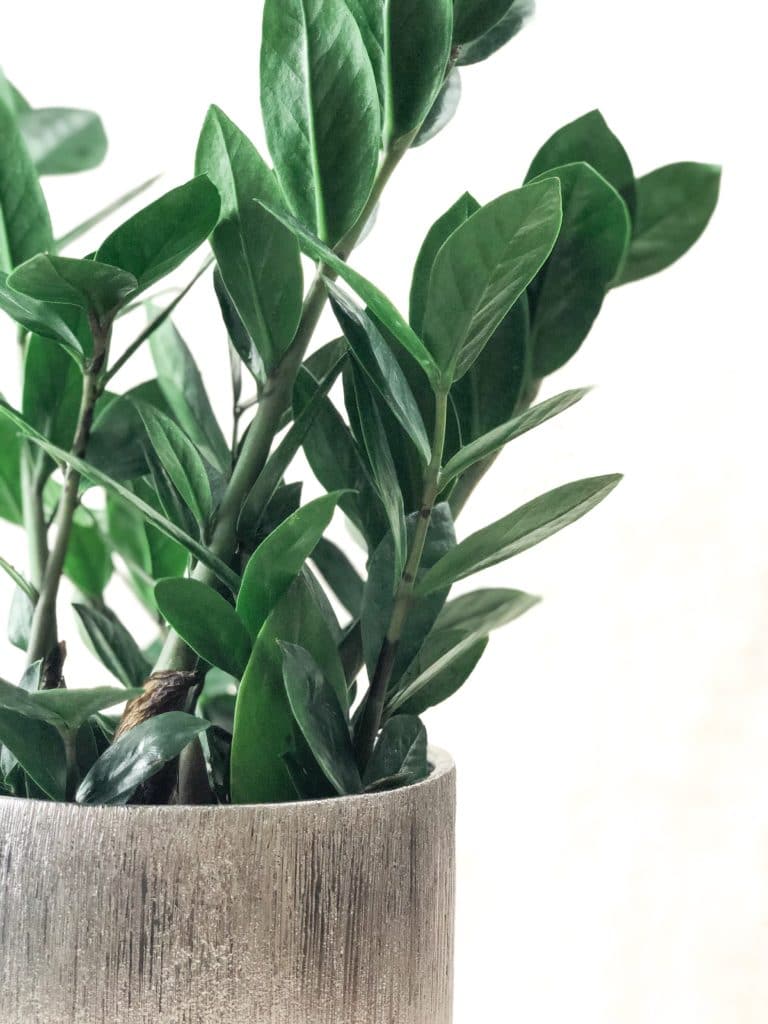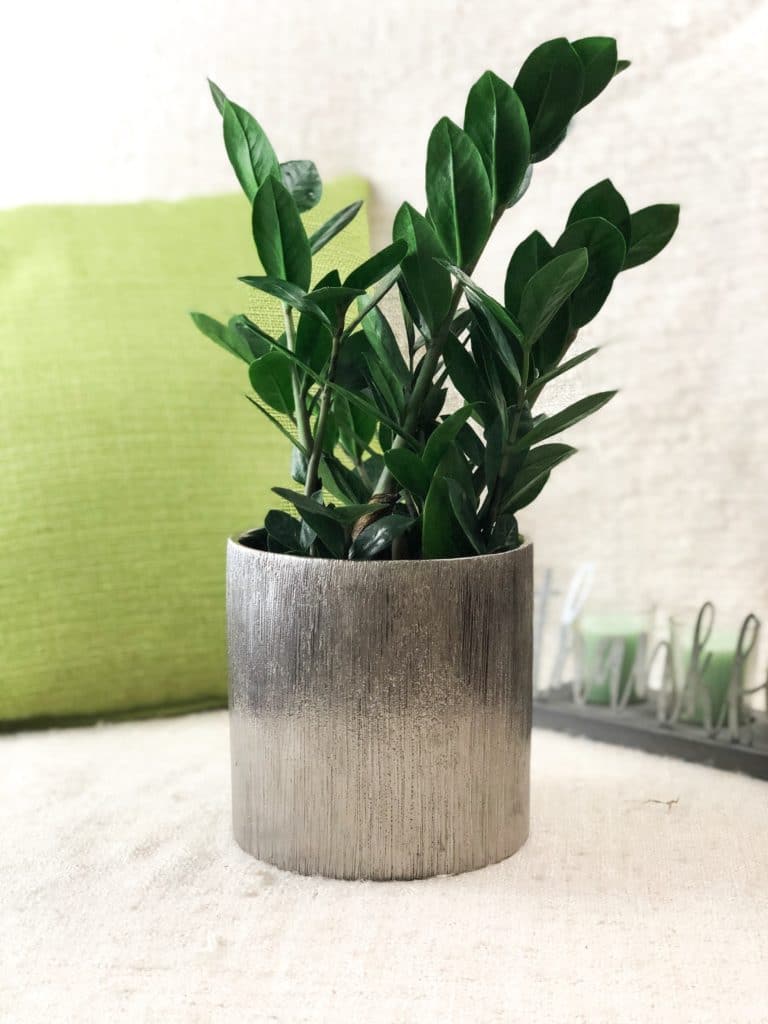How to Care for a ZZ Plant
You’re here to learn how to care for a ZZ plant which means you’re already aware of how gorgeous this plant is (it can’t be missed!). What you might not know, however, is that it’s also a VERY low-maintenance plant. Honestly, it’s pretty remarkable.
Nothing I’ve seen compares to this glossy-green beauty. I looked for the perfect ZZ plant for quite a while so when I found the size I wanted, I snatched it up and it’s been heaven ever since.
If you’re a houseplant aficionado, you know exactly what I’m talking about. There’s nothing quite like an indoor plant that produces waxy, deep-green foliage. The ZZ Plant takes the crown there!
While I love my vining houseplants, like the pothos plant my mom gifted me, I hold a deep appreciation for ZZ plants because I love the way they add some modern zest to my home.

Better yet, zz plants can survive on low-light, dry air, and low-water. It even purifies the air!
Did you hear that, plant beginners…? This is the perfect houseplant for you.
Are ZZ Plants Toxic?
Yes, ZZ plants are indeed toxic to humans and animals because it contains calcium oxalate crystals which can cause skin irritation and stomach pain.
Keep the plant away from your pets and small animals, and be careful when handling this plant.
Protect your hands with gloves when handling ZZ plants and wash your hands when you’re done.
Sunlight needs of ZZ Plants
The ZZ Plant is so versatile that it can thrive in most light conditions when grown indoors. This means it can survive high-light, medium-light, and low-light.
That’s great news for us because it means we can place it in any area of our home and it’ll be perfectly fine! This plant is one of the toughest out there and it’ll try its best to adapt to wherever you place it.
You can keep your ZZ plant next to a window or in a corner of a room that gets far less sun exposure.
It also isn’t fussy about humidity, either. Many tropical plants love humid conditions but the ZZ plant can do just fine without it.
If you live in a dry climate as I do (Zone 9b!) then you don’t have to worry about satisfying any kind of humidity needs for this houseplant.
If you’re just getting started with houseplants, this is a great way to start. If you want a plant for your office, this one is ideal, too.
Just make sure to keep the plant away from harsh, direct sunlight as this could cause scorch and sunburn. Indirect light is best.
Also, ZZ plants prefer to be kept at a temperature between 65 and 75 degrees Farenheight.
Repotting a ZZ Plant
If you wish to repot your ZZ plant, try to use a pot that is of similar size to the pot it came in. The general rule of thumb for houseplants is to never use a pot that’s more than 20% larger than its current pot.
Tp repot, simply tip over the pot and slide the plant out. Place it in the new pot and surround it with potting soil.
Make sure the foliage sits atop the rim of the pot; you don’t want the leaves to be soaking wet every time you water. This will help keep your plant healthy.
You can also leave your ZZ plant in the pot it came in and simply slide it into a pot of similar size. Just make sure to inspect the root system, first.
If the root system is covered in roots so that no soil is visible, then it’s likely time for a larger pot. It’s best to repot in the Spring. If your plant every starts to outgrow its current pot, repot it into a pot that’s one size larger.
How to Water a ZZ plant
ZZ plants are pretty drought-tolerant, which is what makes them so low-maintenance and perfect for those with a tendency to neglect their plants.

This houseplant will survive if you skip a few waterings. The bulb of the plant stores water, which comes in handy in times of drought.
You should water your ZZ plant when the top inch or two of the soil feels dry to the touch.
Use a watering can to water the soil, not the foliage. Always be mindful not to overwater, though, because this plant, like most houseplants, hate sitting in soggy soil.
Overwatering can actually cause root rot so it’s best to air on the side of caution. ith his plant, it’s better to underwater than to overwater.
It’s why you should use a pot that has a drainage hole – this will help you avoid overwatering.
Also, don’t forget to throw out the excess water from the saucer, otherwise the roots will get too much exposure to moisture.
Let the soil dry out between waterings.
How to Fertilize a ZZ Plant
ZZ plants can survive without fertilizer but they can definitely benefit from yearly feeding.
It’s best to fertilize this houseplant once at the beginner of Spring or Summer. A liquid fertilizer is best: it’s gentle and effective. I use a liquid kelp fertilizer for all of my houseplants, including my succulents.
To fertilize, simply add the liquid fertilizer at half strength to watering and fill it with water, then water the plant as you normally would.
That’s sums up the basic care guidelines for growing a healthy ZZ Plant! I hope this post made you realize that you easily grow this beautiful tropical plant in your very own home.
If you’re a gardening beginner, a ZZ plant, snake plant and a vining pothos plant is the perfect place to start!
I think soon you’ll find yourself filling your entire home with indoor plants!
Looking for more houseplants to add to your collection: Check out these posts:

